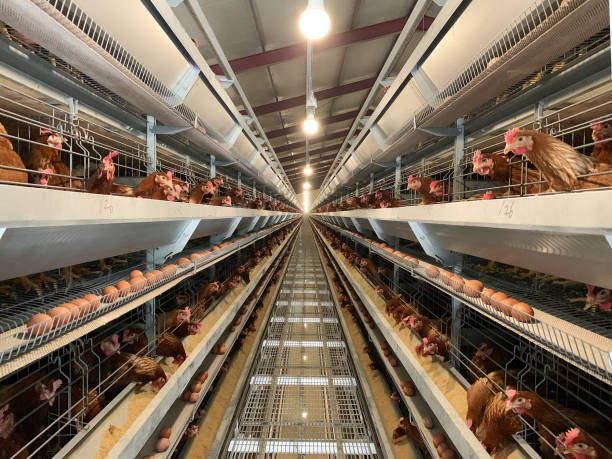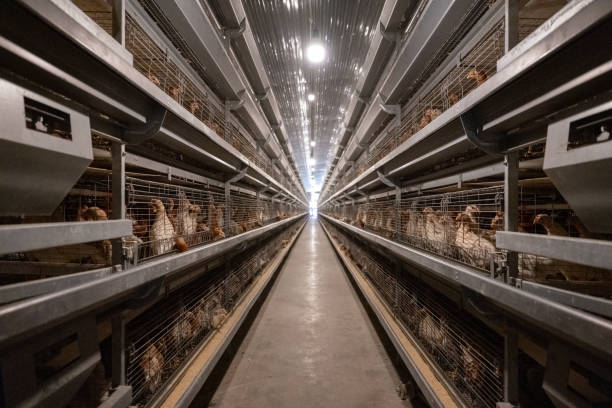
How to Build a Broiler Chicken Cage
How to Build a Broiler Chicken Cage
Raising broiler chickens at scale requires thoughtful planning, especially when it comes to housing. One of the smartest investments any poultry farmer can make is setting up a well-designed broiler chicken cage system. Not only does it maximize space and improve hygiene, but it also helps boost growth rates and reduce mortality. At Livi Machinery, we’ve spent over a decade refining poultry housing solutions for farmers across Africa, Southeast Asia, South America, and beyond. Whether you’re starting small or expanding your operation, building an effective broiler chicken cage starts with understanding the key components—design, materials, ventilation, feeding, and waste management. Let’s break it down step by step so you can create a functional, efficient setup that supports healthy, fast-growing birds.
Choosing the Right Design and Layout
The first thing to consider when building a broiler cage is the design. Unlike laying hens, broilers grow quickly and spend their entire life cycle in a confined space—usually 5 to 7 weeks. This means their cages need to accommodate rapid weight gain while minimizing stress and injury. The most common types are tiered (multi-layer) systems, which can be two to four levels high, depending on barn height and access equipment.
When designing your layout, think about walkways, feeding lines, water access, and ease of cleaning. We recommend leaving at least 80 cm (31 inches) between rows for maintenance staff to move comfortably. Each cage should have enough floor space—typically 6–8 kg per square meter of stocking density—as overcrowding leads to leg issues and poor air quality. Also, consider installing adjustable dividers so you can modify compartment sizes as chicks grow.
It’s also worth noting that some farms still use floor rearing, but caged systems offer better disease control and manure separation. That’s important because wet litter increases ammonia levels, which harms respiratory health. A good cage design lifts birds off feces, reduces breast blisters, and streamlines daily monitoring. Think of it like creating small apartments for your future meat chickens—one that keeps them safe, dry, and ready to thrive.

Materials Matter: What to Use and Why
You might be tempted to save money by using flimsy wire mesh or recycled metal, but trust us—your chickens’ safety and your long-term costs depend on quality materials. The skeleton of your broiler cage should be made from galvanized steel or hot-dipped zinc-coated iron. These resist rust and corrosion, even in humid environments where moisture from manure and drinking systems builds up.
Walls and floors typically use welded wire mesh. For broilers, go with 50×50 mm or 60×60 mm spacing for the bottom grate—this allows droppings to fall through while supporting heavier birds later in the cycle. Avoid plastic-coated grids unless they’re high density; cheaper coatings chip easily and expose birds to sharp edges. Side panels often have smaller gaps (around 25×25 mm) to prevent wings or heads from getting stuck.
If you’re building inside a shed, consider adding curtains or sliding PVC panels on the sides to control airflow based on season and temperature. And don’t forget accessories—automatic feeders and nipple drinkers are game-changers. They reduce labor, prevent feed waste, and ensure all birds eat evenly. Investing in automation now saves thousands in labor and losses over time.

For DIY builders, sketch out dimensions first. Standard module widths run between 1.8 to 2.4 meters, with depth around 70–90 cm. Stackable designs should include safety latches and reinforced crossbeams to avoid collapse under weight. If structural work isn’t your forte, partnering with a manufacturer like Livi ensures you get precision-engineered units delivered ready-to-assemble—with instructions and local support.
Ventilation, Lighting, and Temperature Control
Even the best-built cages won’t produce great results if the environment is wrong. Broilers need clean air, consistent lighting, and stable temperatures to convert feed efficiently. In warmer climates, poor ventilation can kill birds within hours due to heat stress. In colder areas, inadequate warmth slows growth and invites illness.
Start with ceiling-mounted exhaust fans and sidewall intake vents to maintain airflow without drafts. Natural ventilation works in mild zones, but tunnel ventilation systems work better in hot regions. Install thermostats and humidity sensors to monitor conditions automatically. Aim for 18–24°C (64–75°F) during brooding week one, gradually lowering to 16–18°C as birds mature.
Lighting plays a subtle but powerful role. Most commercial setups use LED lights on timers—23 hours of light and 1 hour of darkness daily during early stages, then shifting to intermittent lighting patterns later to promote rest and digestion. Dimmable lights help reduce pecking and activity surges.
Litter trays below cages collect manure safely, but buildup still needs managing. Some farms install movable belts or scraper systems; others opt for manual removal every few days. Either way, regular cleaning prevents bacterial growth and flies. Remember: happy chickens aren’t just fed well—they breathe clean air, stay dry, and aren’t stressed by noise or sudden changes.
From Planning to Production: Making It Work for You
Now that you know the essentials of structure, materials, and environment, let’s talk next steps. Building a broiler cage system doesn’t have to mean starting from scratch. Many farmers choose modular prefabricated kits—which cut construction time drastically and come pre-tested for durability. These systems are scalable: start with one house, add more modules as demand grows.
Before assembly, double-check your site prep. Floors must be level, walls sealed against rodents, and electrical wiring done safely. Consider future expansion too—will this design allow for adding another row? Can your water supply handle extra drinkers?

Training staff matters just as much as hardware. Make sure everyone knows how to adjust feeder heights, check drinker flow, recognize signs of sickness, and sanitize cages between batches. Biosecurity protocols—like footbaths, changing clothes, and limiting visitor access—are non-negotiable for disease prevention.
At Livi, we don’t just sell equipment—we help clients succeed. That means advising on farm layout, recommending compatible machinery (like manure removal conveyors or egg collection belts), and offering after-sales service wherever possible. Every cage we build is tested for load capacity, corrosion resistance, and ease of maintenance because your success is our reputation.
Ready to take your broiler farming to the next level? Whether you need a single cage prototype or a full automated house for 20,000 birds, we’d love to hear from you. Share your project details—dimensions, bird count, local climate—and we’ll send you a customized proposal, free of charge. Just leave your name, number, and country, and one of our poultry experts will reach out within 24 hours. Let’s build something great together.
Frequently Asked Questions
What size should a broiler chicken cage be?
A typical cage unit ranges from 1.8 to 2.4 meters wide and 70–90 cm deep. Height varies by layers—single-tier units sit at about 40 cm floor clearance, while multi-level systems can reach 3 meters tall.
Can I build a broiler cage myself?
Yes, but only if you have experience in metalwork and understand animal welfare standards. Most farmers prefer buying pre-designed systems for consistency and reliability.
How many broilers can fit in one cage?
Depends on age and weight. For example, a 1 m² space holds about 10–12 chicks (1–2 kg) early on but only 6–8 birds near harvest (2.5–3 kg).
Do broiler cages need bedding?
Not directly in the cage since birds are elevated, but some farms place absorbent material under trays to manage moisture. The main goal is keeping droppings separated from birds.
Are caged broilers healthier than floor-raised ones?
Generally yes—because they stay dry, have less contact with manure, and are easier to monitor. However, proper ventilation and cleanliness are critical either way.
What kind of maintenance do broiler cages require?
After each batch, wash and disinfect cages thoroughly. Check welds, hinges, and feed lines regularly. Lubricate moving parts monthly to extend lifespan.
Can broiler cages be used for other poultry?
They can adapt to ducks or turkeys with modifications in spacing and height, but broiler cages aren’t ideal for layers due to different behavior and perch needs.
How long do galvanized broiler cages last?
High-quality ones last 15+ years with care. Hot-dip galvanization resists rust far longer than electroplated models.
Is automated feeding necessary?
Not strictly necessary, but highly recommended. Automatic feeders ensure uniform distribution, reduce labor, and minimize waste—paying for themselves over time.
Where can I get expert help designing my broiler setup?
Companies like Livi Machinery offer free layout consultations, including ventilation mapping, cage configuration, and equipment selection tailored to your region and goals.
